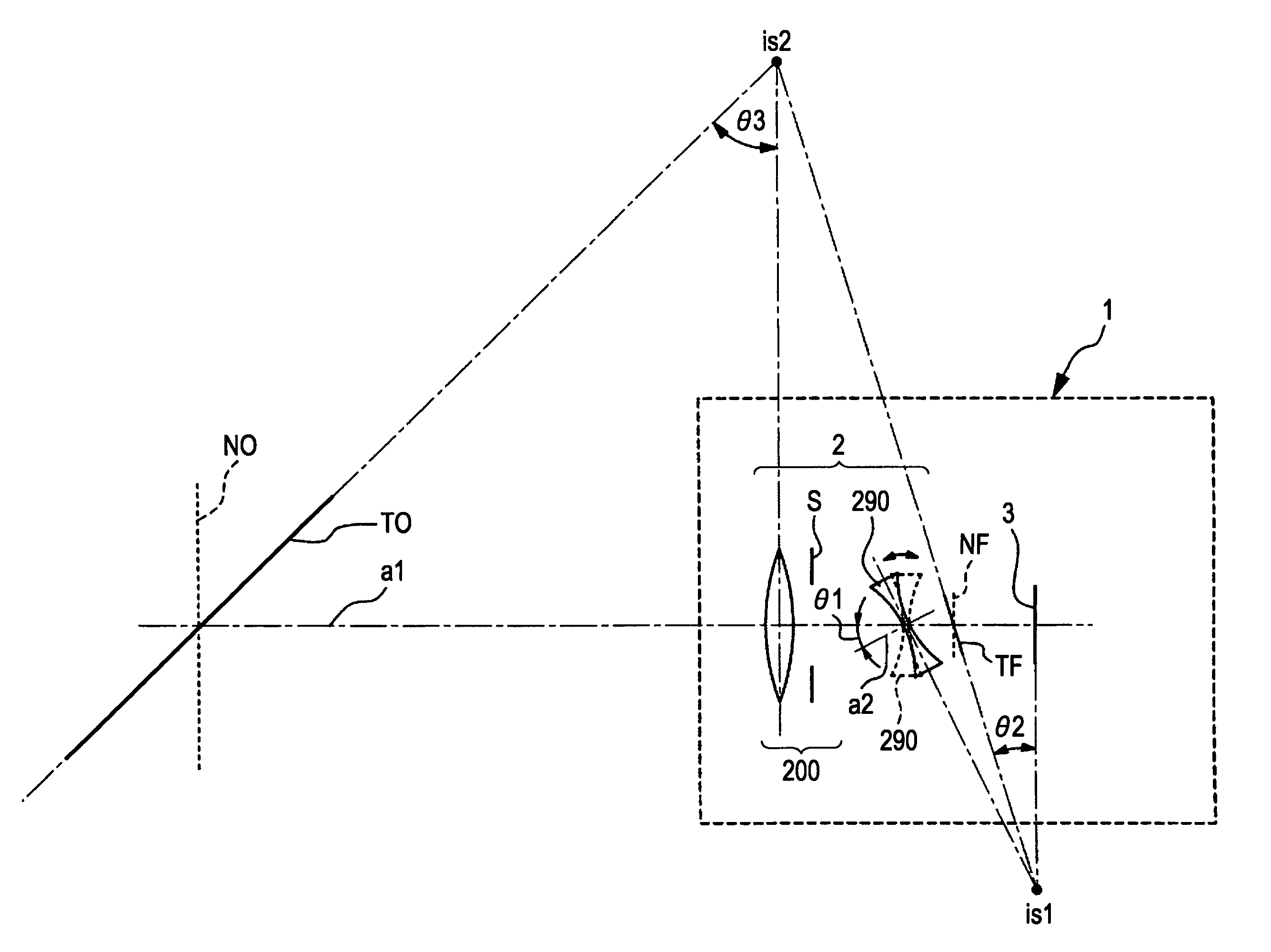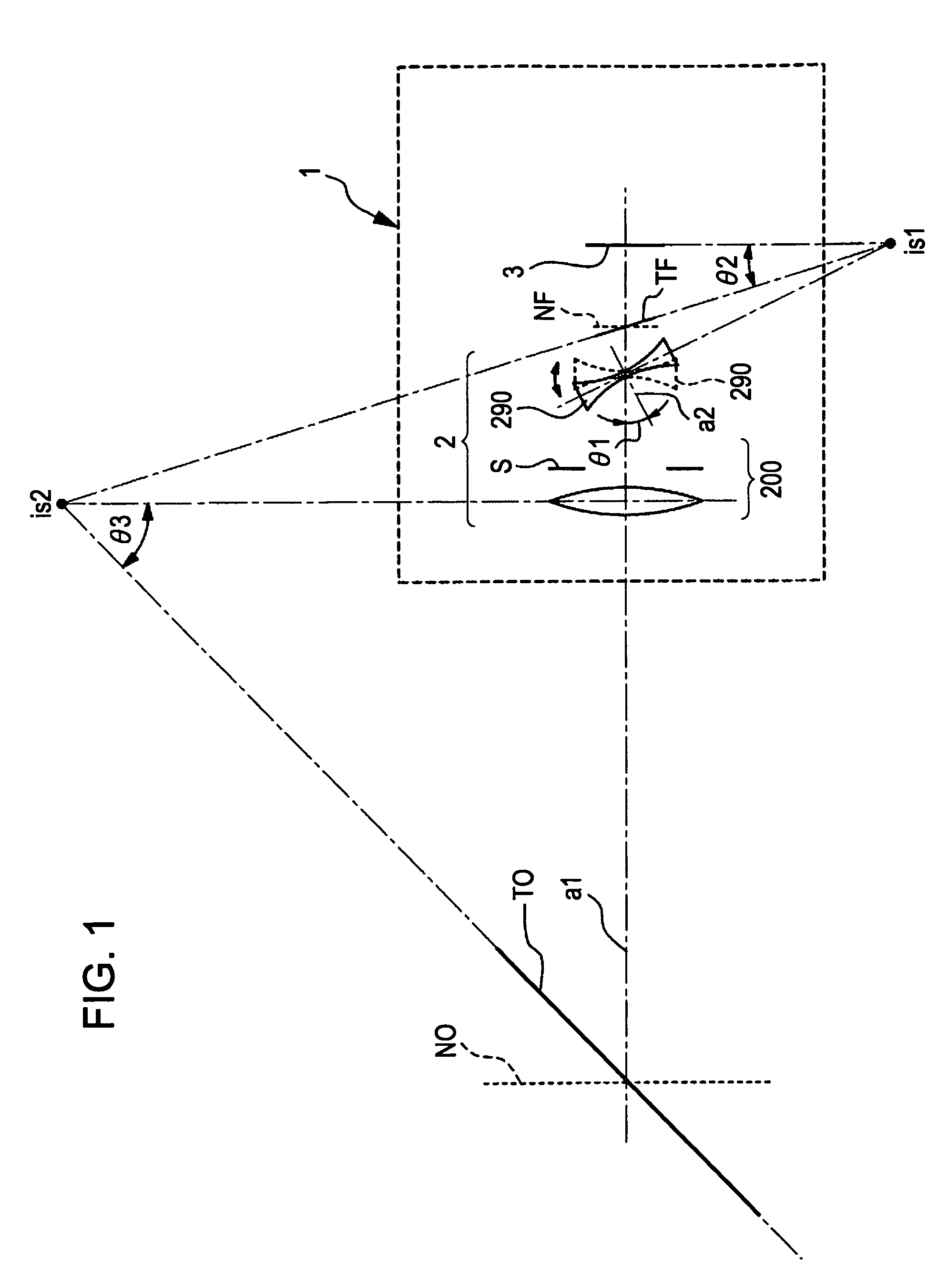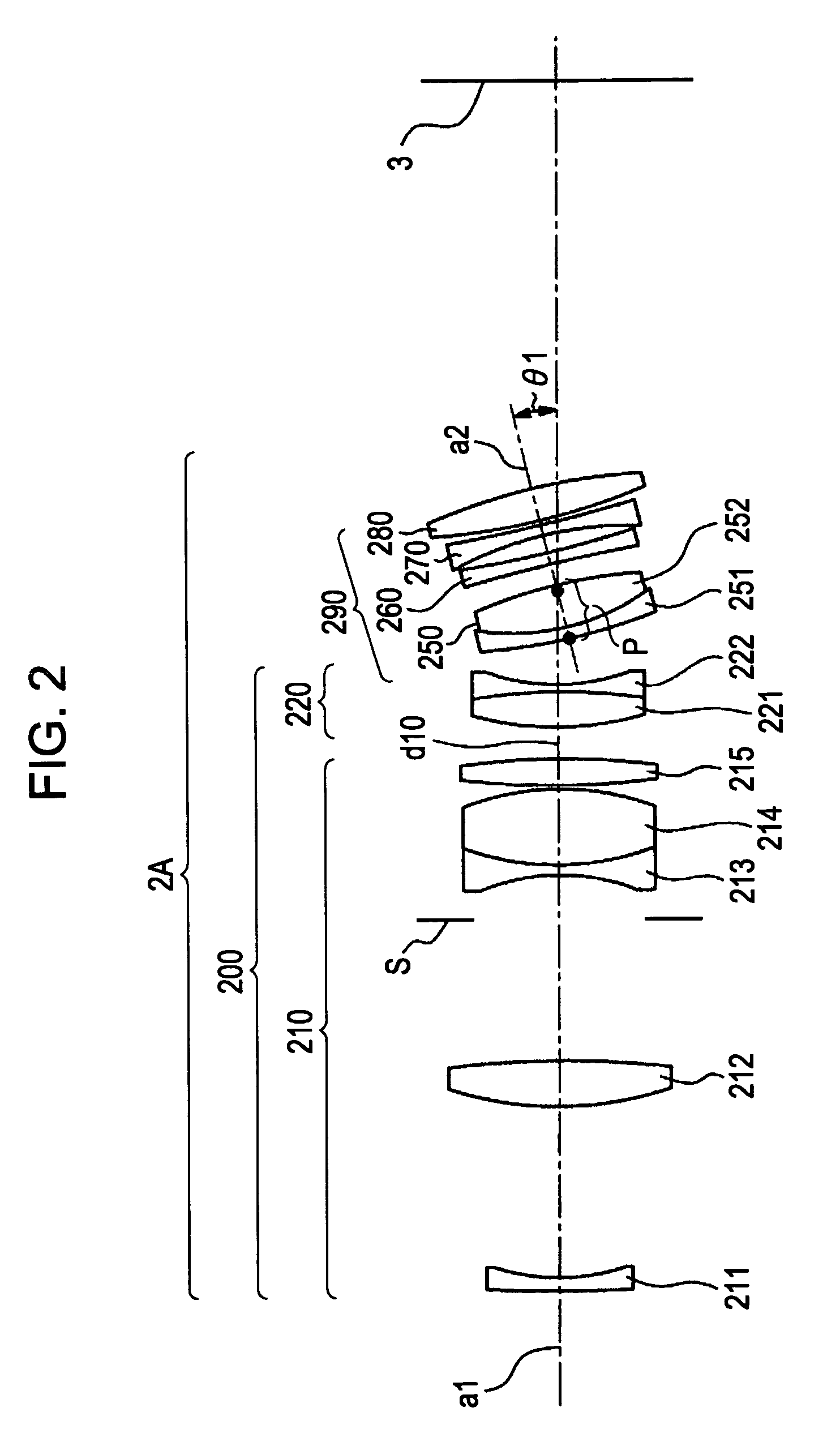Tilt lens system and image pickup apparatus
a technology of tilt lens and image pickup, which is applied in the field of new tilt lens system and image pickup apparatus, can solve the problems of incorrect operation of ae, difficulty in mechanical interlocking, and inability to properly operate a
- Summary
- Abstract
- Description
- Claims
- Application Information
AI Technical Summary
Benefits of technology
Problems solved by technology
Method used
Image
Examples
first embodiment
[0086]FIG. 2 is a cross section showing a lens arrangement of a tilt lens system 2A according to the invention. The tilt lens system 2A includes a master lens system 200, and a tilt lens unit 290, in order from the object side. The master lens system 200 has an optical axis (primary optical axis) a1. The tilt lens unit 290 has a negative refractive power, and has an optical axis a2. The optical axis a2 of the tilt lens unit 290 may be tilted with respect to the optical axis a1 of the master lens system 200. When the optical axis a2 of the tilt lens unit 290 is not tilted, the optical axis a2 is aligned with the optical axis a1 of the master lens system 200, thereby defining a coaxial optical system. The master lens system 200 includes a focus lens unit 210 and a fixed lens unit 220, in order from the object side.
[0087]The focus lens unit 210 includes a negative meniscus lens 211 having a concave surface with a larger curvature on the image side, a biconvex lens 212, a diaphragm S, a...
second embodiment
[0097]FIG. 8 is a cross section showing a lens arrangement of a tilt lens system 2B according to the invention. The master lens system 200 has an optical axis (primary optical axis) a1. The tilt lens system 2B includes a master lens system 200, and a tilt lens unit 290, in order from the object side. The tilt lens unit 290 has a negative refractive power, and has an optical axis a2. The optical axis a2 of the tilt lens unit 290 may be tilted with respect to the optical axis a1 of the master lens system 200. When the optical axis a2 of the tilt lens unit 290 is not tilted, the optical axis a2 is aligned with the optical axis a1 of the master lens system 200, thereby defining a coaxial optical system. The master lens system 200 includes a focus lens unit 210 and a fixed lens unit 220, in order from the object side.
[0098]The focus lens unit 210 includes a negative meniscus lens 211 having a concave surface with a larger curvature on the image side, a biconvex lens 212, a diaphragm S, a...
third embodiment
[0109]FIG. 14 is a cross section showing a lens arrangement of a tilt lens system 2C according to the invention. The tilt lens system 2C includes a master lens system 200, and a tilt lens unit 290, in order from the object side. The master lens system 200 has an optical axis (primary optical axis) a1. The tilt lens unit 290 has a negative refractive power, and has an optical axis a2. The optical axis a2 of the tilt lens unit 290 may be tilted with respect to the optical axis a1 of the master lens system 200. When the optical axis a2 of the tilt lens unit 290 is not tilted, the optical axis a2 is aligned with the optical axis a1 of the master lens system 200, thereby defining a coaxial optical system. The master lens system 200 includes a focus lens unit 210 and a fixed lens unit 220, in order from the object side.
[0110]The focus lens unit 210 includes a negative meniscus lens 211 having a concave surface with a larger curvature on the image side, a biconvex lens 212, a diaphragm S, ...
PUM
 Login to View More
Login to View More Abstract
Description
Claims
Application Information
 Login to View More
Login to View More - R&D
- Intellectual Property
- Life Sciences
- Materials
- Tech Scout
- Unparalleled Data Quality
- Higher Quality Content
- 60% Fewer Hallucinations
Browse by: Latest US Patents, China's latest patents, Technical Efficacy Thesaurus, Application Domain, Technology Topic, Popular Technical Reports.
© 2025 PatSnap. All rights reserved.Legal|Privacy policy|Modern Slavery Act Transparency Statement|Sitemap|About US| Contact US: help@patsnap.com



